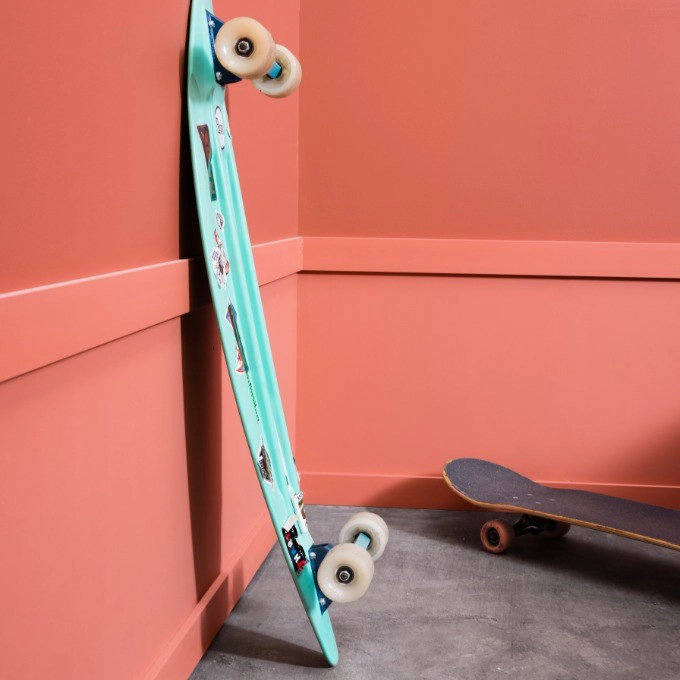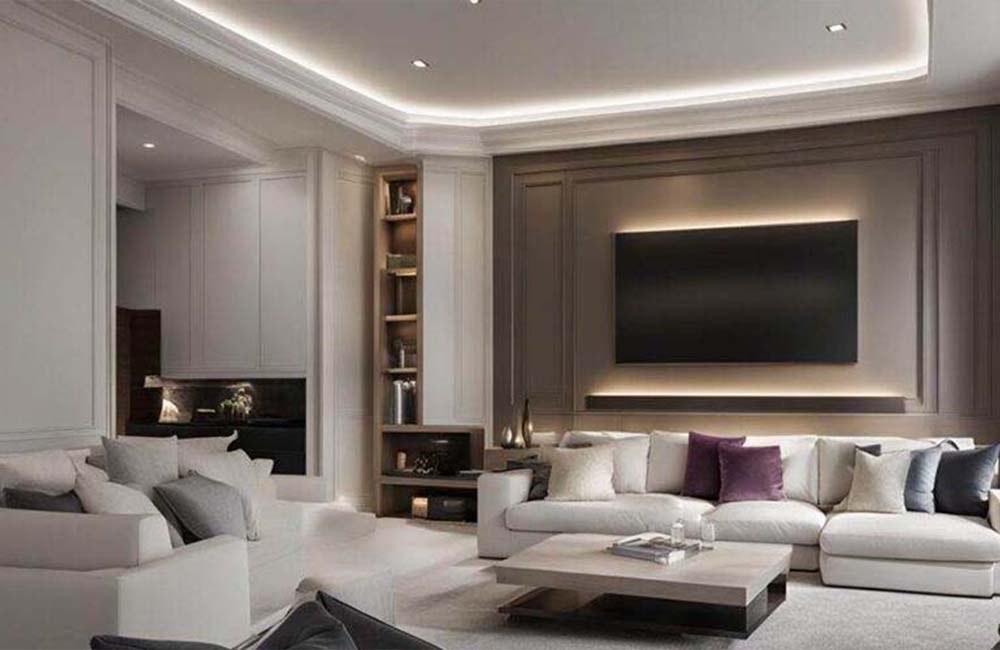blog
What is the Difference Between Coving and Cornice?
When decorating your home, especially when adding finishing touches to the walls and ceilings, it’s easy to get confused between terms like coving and cornice. These architectural elements may seem similar at first glance, but they have distinct features and applications. Both coving and cornice are designed to enhance the aesthetic appeal of your interiors, adding elegance and style to the junction between walls and ceilings. Understanding the difference between coving and cornice will help you make an informed decision about which option best suits your home’s style.
At Coving Online, we specialise in supplying and installing a wide range of coving and cornice options across the UK, offering both traditional and modern designs. Let’s take a closer look at what makes these two decorative elements unique, and which one you should choose for your next interior project.
-
What is Coving?
Coving is a type of moulding with a concave, rounded profile that softens the angle between a wall and a ceiling. It has a more understated and subtle design compared to cornice and is often used in modern and minimalist interiors. Coving is generally chosen for its simplicity and its ability to create a smooth transition between the wall and ceiling.
Key Characteristics of Coving:
- Shape: Typically curved or concave.
- Design: Simple, with fewer ornate details.
- Application: Used to smooth out the corner where the ceiling meets the wall, offering a clean finish.
- Materials: Available in materials such as plaster, polyurethane, and polystyrene.
Coving is perfect for homeowners looking to add a finishing touch to their ceilings without making a bold statement. It can be used in a variety of settings, from modern flats to traditional homes, making it an extremely versatile choice for many different styles.
-
What is Cornice?
Cornice is a decorative moulding that crowns a wall or ceiling, often featuring intricate and elaborate designs. It is more ornate than coving, with detailed patterns and bold projections that give rooms a touch of grandeur. Cornice has historical significance, commonly found in period properties and classical buildings, but it’s still widely used today in homes seeking a more luxurious or formal interior look.
Key Characteristics of Cornice:
- Shape: More angular with intricate details.
- Design: Highly decorative, with a variety of classical and ornate patterns.
- Application: Used to add an architectural or ornamental finish to ceilings.
- Materials: Made from plaster, polyurethane, or wood.
Cornice is often chosen for homes with high ceilings or period properties, where decorative details are crucial to maintaining the historical charm. Its elaborate design adds drama to any room, making it a feature in its own right.
-
Key Difference Between Coving and Cornice
The difference between coving and cornice is mainly found in their design, purpose, and complexity. While both serve as decorative mouldings, they are used for slightly different effects.
Design:
- Coving: Characterised by its simple, curved design, making it a subtle and understated option.
- Cornice: More ornate with detailed patterns, often creating a more dramatic impact on the room.
Profile:
- Coving: Usually has a concave shape, creating a smooth, seamless look.
- Cornice: Often features elaborate designs with projections, giving it a more prominent and decorative appearance.
Materials:
- Both coving and cornice are available in materials like plaster, polyurethane, and polystyrene. However, cornice may also come in wood, especially for highly decorative or classical applications.
Application:
- Coving is used mainly for modern or minimalist designs due to its simplicity.
- Cornice is ideal for traditional, classical, or grand interior styles, where elaborate detailing is desired.
In summary, coving is perfect for creating a clean, smooth transition between walls and ceilings, while cornice serves as a decorative statement piece that adds character and elegance to a room.
-
Choosing the Right Moulding for Your Home
Now that you understand the difference between coving and cornice, how do you decide which one is right for your home? The choice largely depends on your personal style, the period of your property, and the look you want to achieve.
Coving for Modern Homes:
If you have a modern or minimalist home, coving may be the best option. Its simple design complements contemporary interiors by adding a sleek, polished finish to the room. Coving also works well in smaller spaces where large, ornate mouldings might overwhelm the area.
Cornice for Period Properties:
For period homes, cornice is often the preferred choice. The intricate detailing of cornices enhances the architectural character of older buildings, adding a sense of history and craftsmanship to the space. Cornice is also a great option for rooms with high ceilings, as it draws the eye upwards and creates a sense of grandeur.
-
Materials for Coving and Cornice
Both coving and cornice are available in a variety of materials, each with its own benefits.
Plaster:
Traditional plaster coving and cornice are known for their durability and classic finish. Plaster mouldings can be used in period properties where authenticity is key. However, plaster is heavier and more labour-intensive to install, often requiring skilled professionals to achieve the best results.
Polyurethane:
Polyurethane coving and cornice are lightweight and easy to install, making them popular choices for modern homes. This material is highly durable, resistant to moisture, and can be painted to match your décor. It’s also more affordable than plaster, while still offering a high-end look.
Polystyrene:
For those on a budget, polystyrene coving is a cost-effective option. It’s lightweight, making it suitable for DIY installations, though it lacks the refined finish of plaster or polyurethane. Polystyrene is also less durable over time, especially in high-traffic areas.
-
Installation Process
Both coving and cornice require careful installation to ensure a seamless finish. While coving can sometimes be installed by confident DIYers, cornice installation is typically best left to professionals due to its complexity.
Coving Installation:
- Measure and cut the coving to fit the room’s perimeter.
- Apply adhesive to the back of the coving and fix it in place.
- Smooth out any gaps with filler and sand for a perfect finish.
- Coving Online offers professional installation services to ensure a flawless result.
Cornice Installation:
- Given the intricate designs, cornice often requires more precise cuts and positioning.
- Use adhesive and screws to secure the cornice in place, especially for heavier plaster models.
- Seal any joints with filler, and once dry, paint to match your ceiling or walls.
-
Maintenance and Cleaning
Maintaining coving and cornice is relatively straightforward, but proper care can prolong their lifespan and keep them looking their best.
- Coving: Clean with a damp cloth to remove dust. Avoid harsh chemicals that could damage the surface, particularly for polystyrene coving.
- Cornice: Depending on the material, more intricate designs may require extra care. Plaster cornices may need occasional touch-ups if cracks appear, while polyurethane versions are more resistant to wear and tear.
Connect With Us Today!
Choosing between coving and cornice comes down to your personal style, budget, and the architectural design of your home. Coving offers a sleek and simple look, perfect for modern homes, while cornice adds an element of luxury and tradition with its ornate designs. Whether you’re looking to add a subtle finishing touch or a bold statement, both coving and cornice can elevate your interior spaces.
At Coving Online, we provide high-quality coving and cornice in a range of styles and materials to suit any home. Whether you’re after a minimalist look or a grand, classical design, we have the perfect solution for your project. Contact us today to explore our collection and get expert advice on which option is right for you.
Frequently Asked Questions (FAQs)
- What is the main difference between coving and cornice?
Coving is simpler and usually features a smooth, curved design, while cornice is more ornate with intricate details and projections.
- Can I install coving and cornice myself?
While DIY installation is possible for coving, it’s recommended to hire professionals for cornice due to its complexity.
- Which material is better for coving and cornice?
For ease of installation and durability, polyurethane is a popular choice, though plaster offers a more traditional, high-quality finish.
- Can coving and cornice be used in kitchens and bathrooms?
Yes, but polyurethane is preferable in moisture-prone areas like kitchens and bathrooms due to its resistance to humidity.
- Can I paint coving and cornice?
Yes, both can be painted to match your interior design. It’s common to paint them the same colour as the ceiling for a seamless look.
- How much does coving installation cost?
The cost varies depending on the material and complexity of the design. Coving is generally more affordable, while cornice is pricier due to its intricate designs.
- How long does coving or cornice installation take?
Coving installation is quicker and usually takes a few hours, while cornice may take longer, depending on the intricacy of the design.
- Is coving or cornice more suitable for modern homes?
Coving is more suited to modern homes due to its simple design, while cornice is ideal for traditional or grand interiors.


